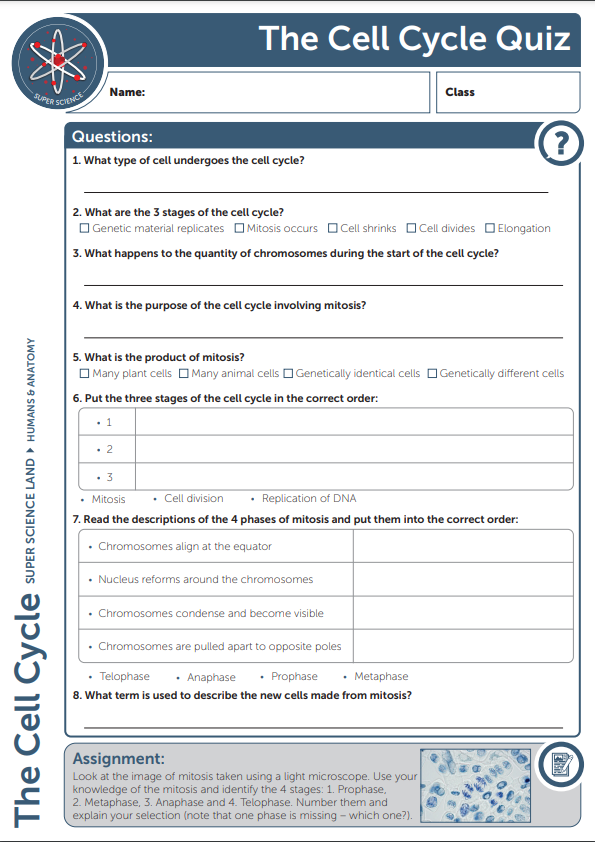 Loading...
Loading...
Initial language selection is based on your web browser preferences.
This scene lets students explore a typical cell undergoing the cell cycle. Here they will observe replication of chromosomes and mitosis tasking place. Students will develop an understanding of what needs to happen for new genetically identical cells to be made and the purpose for their production.
# Learning objectives
1: Know the purpose of the Cell Cycle {.info}
2: Know the Stages of Mitosis {.info}
3: Describe the Stages of Mitosis {.info}
# The Cell Cycle {.objective .objective1}
Students will learn about the cell cycle and the main stages in it: Replication, mitosis, and cell division. They will begin to understand that replication of chromosomes happens at the start of the cell cycle in preparation for mitosis.
Students will be asked to observe the cell and replication taking place. Here they will be asked to observe the activity and identify clues that indicate the chromosomes are replicating by observing single chromosomes doubling.
# Mitosis {.objective .objective2}
Here students will learn about mitosis. They will develop an understanding of what happens to chromosomes during nuclear division. Students will also learn to identify the phases of mitosis.
Students will be asked to observe the cell cycle again and this time observe the part modelling mitosis. Students will be asked to identify clues showing the stages and think about how to describe these stages.
# Cell Division {.objective .objective3}
Students will learn about what happens to a cell after replication and mitosis comes to an end. They will develop an understanding that the final stage, cell division occurs only once the cell has duplicated the cell contents so that after the cell divides, the daughter cells have the same content and are genetically identical. They will also appreciate that the cell cycle is a continuous process even though the stages can be isolated and identified.
Students will be asked to explore the scene a final time and appreciate that replication, mitosis and cell division are one fluid process. However, the stages can be identified as they are distinct. Students are encouraged to think about the key points that can be used to describe the stages and how they can be identified.
# Teacher Resources
### Download Teacher Notes
[](https://data.avncloud.com/activities/794385/files/The%20Cell+Cycle+Teacher+Notes+1.pdf?date=1677672612&size=573842&md5=849b6cc8ce5625a3a1e76c80948699e0)
### Student Quiz Answers Document
[](https://data.avncloud.com/activities/794386/files/The%20Cell+Cycle+Teacher+Notes+2.pdf?date=1677672732&size=429205&md5=0c6300d0960937cbe18360f515a3e30c)
### Download Student Quiz Document
[](https://data.avncloud.com/activities/794387/files/The%20Cell+Cycle+Teacher+Notes+3.pdf?date=1677672826&size=187107&md5=81e88759ca3ab92b3e354e74a8c36ace)